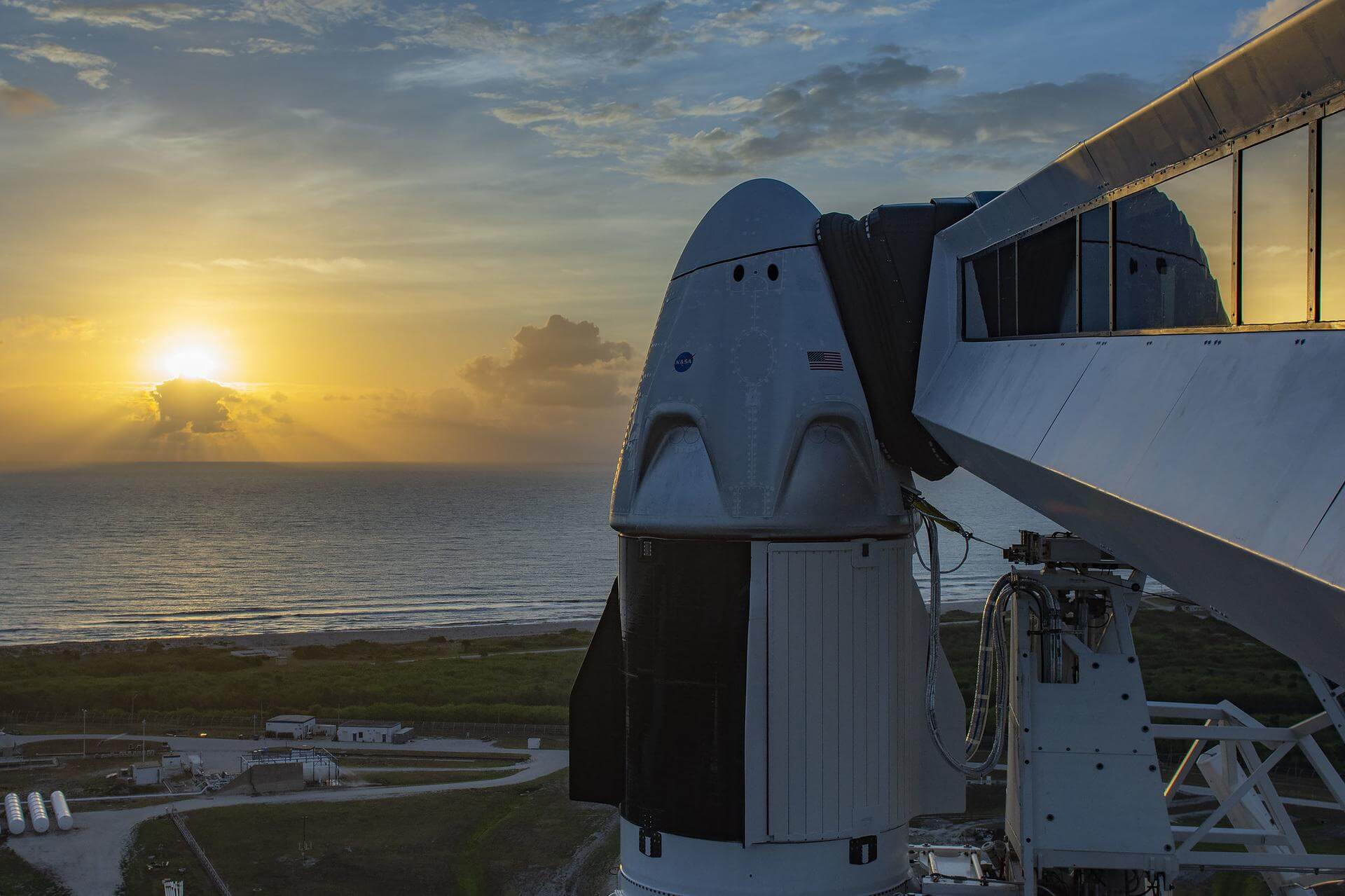
Spacecraft Undocking
SpaceX DM-2 Crew Dragon Undocking
International Space Station International Space Station Falcon 9 Block 5 | SpX-DM2 (Demonstration Mission 2) Expedition 63
The first crewed SpaceX Crew Dragon will undock from the International Space Station on August 1. Aboard the spacecraft will be NASA astronauts Douglas Hurley and Robert Behnken. It will then reenter the Earth's atmosphere and splashdown in the Atlantic Ocean.
Related Information
Falcon 9 Block 5 | SpX-DM2 (Demonstration Mission 2)
SpaceX | United States of AmericaKennedy Space Center, FL, USA
May 30, 2020, 7:22 p.m.
Status: Launch Successful
Mission:
A new era of human spaceflight is set to begin as American astronauts once again launch on an American rocket from American soil. The Demo-2 mission is the second test flight of Crew Dragon, and the first flight with crew onboard. It will carry NASA astronauts Robert Behnken and Douglas Hurley to the International Space Station for an extended stay (the specific mission duration will be determined once on station based on the readiness of the next commercial crew launch). They will perform tests on Crew Dragon in addition to conducting research and other tasks with the space station crew. As the final flight test for SpaceX, this mission will validate the company’s crew transportation system, including the launch pad, rocket, spacecraft, and operational capabilities. This also will be the first time NASA astronauts will test the spacecraft systems in orbit. The Demo-2 mission will be the final major step before NASA’s Commercial Crew Program certifies Crew Dragon for operational, long-duration missions to the space station. Current Mission Status: After a successful ride to orbit and stay at the International Space Station, the Dragon Spacecraft successfully made its way back to Earth. Capsule successfully landed in the Gulf of Mexico waters on 3rd August 2020 at 18:48 UTC.
Low Earth Orbit #LaunchAmerica B1058 - Maiden Flight Of Course I Still Love You
International Space Station
Low Earth Orbit Government Founded: Nov. 20, 1998 Mass: 419.7T Volume: 931 m³
Status - Active
The International Space Station (ISS) is a space station, or a habitable artificial satellite, in low Earth orbit. Its first component was launched into orbit in 1998, with the first long-term residents arriving in November 2000. It has been inhabited continuously since that date. The last pressurised module was fitted in 2011, and an experimental inflatable space habitat was added …
Electron
Owl New World (StriX Launch 7)
Rocket Lab Launch Complex 1A - Rocket Lab Launch Complex 1, Mahia Peninsula, New ZealandSynthetic aperture radar satellite for Japanese Earth imaging company Synspective.
Falcon 9
Project Kuiper (KF-03)
Space Launch Complex 40 - Cape Canaveral SFS, FL, USAThird of a three launches contract for Amazon's Kuiper low Earth orbit satellite internet constellation, with 24 satellites on board.
Starship
Flight 11
Orbital Launch Pad 1 - SpaceX Starbase, TX, USA11th test flight of the two-stage Starship launch vehicle.
Long March 2D
Shiyan 31
Launch Area 4 (SLS-2 / 603) - Jiuquan Satellite Launch Center, People's Republic of ChinaChinese satellite reported to be for "new optical imaging technological demonstration" purposes. Actual usage not known.
Gravity-1
3 satellites
Haiyang Spaceport - Sea LaunchCarried 3 satellites to sun-synchronous orbit, including the Earth observation satellite Jilin-1 Wideband-02B-07. Details TBD.
New Shepard
NS-36
West Texas Suborbital Launch Site/ Corn Ranch - Corn Ranch, Van Horn, TX, USANS-36 is the 15th crewed flight for the New Shepard program and the 36th in the New Shepard program's history.
Falcon 9
Starlink Group 11-17
Space Launch Complex 4E - Vandenberg SFB, CA, USAA batch of 28 satellites for the Starlink mega-constellation - SpaceX's project for space-based Internet communication system.
Falcon 9
Starlink Group 10-59
Space Launch Complex 40 - Cape Canaveral SFS, FL, USAA batch of 28 satellites for the Starlink mega-constellation - SpaceX's project for space-based Internet communication system.
Falcon 9
Starlink Group 11-39
Space Launch Complex 4E - Vandenberg SFB, CA, USAA batch of 28 satellites for the Starlink mega-constellation - SpaceX's project for space-based Internet communication system.
Electron
JUSTIN
Rocket Lab Launch Complex 2 (Launch Area 0 C) - Wallops Flight Facility, Virginia, USASub-orbital launch under Rocket Lab’s Hypersonic Accelerator Suborbital Test Electron (HASTE) program, details TBD.


